Since 1962, Switzerland has enforced a law unlike any other in the world: it requires that every resident be guaranteed a place in a protective shelter. Long seen as a relic of the Cold War, this provision regained relevance after Russia's invasion of Ukraine. Today, every citizen is entitled to one square metre of space in an underground bunker—and, unlike most Europeans, can actually expect to get it.
Neutral Switzerland holds the world record for the highest number of protective shelters per capita. In this country of fewer than nine million people, over 370,000 bunkers have been built—ranging from small private shelters to massive facilities designed for thousands. All are intended to safeguard the civilian population in the event of war, including nuclear conflict, and are equipped for autonomous use for up to two weeks.
Since the early 1960s, the law has mandated that shelters be included in every new residential building. If constructing a private shelter is not feasible, the owner must pay for a space in the nearest public bunker. The cost per spot ranges from 1,500 to 3,000 Swiss francs, depending on the size of the facility, and is borne by developers or property owners.
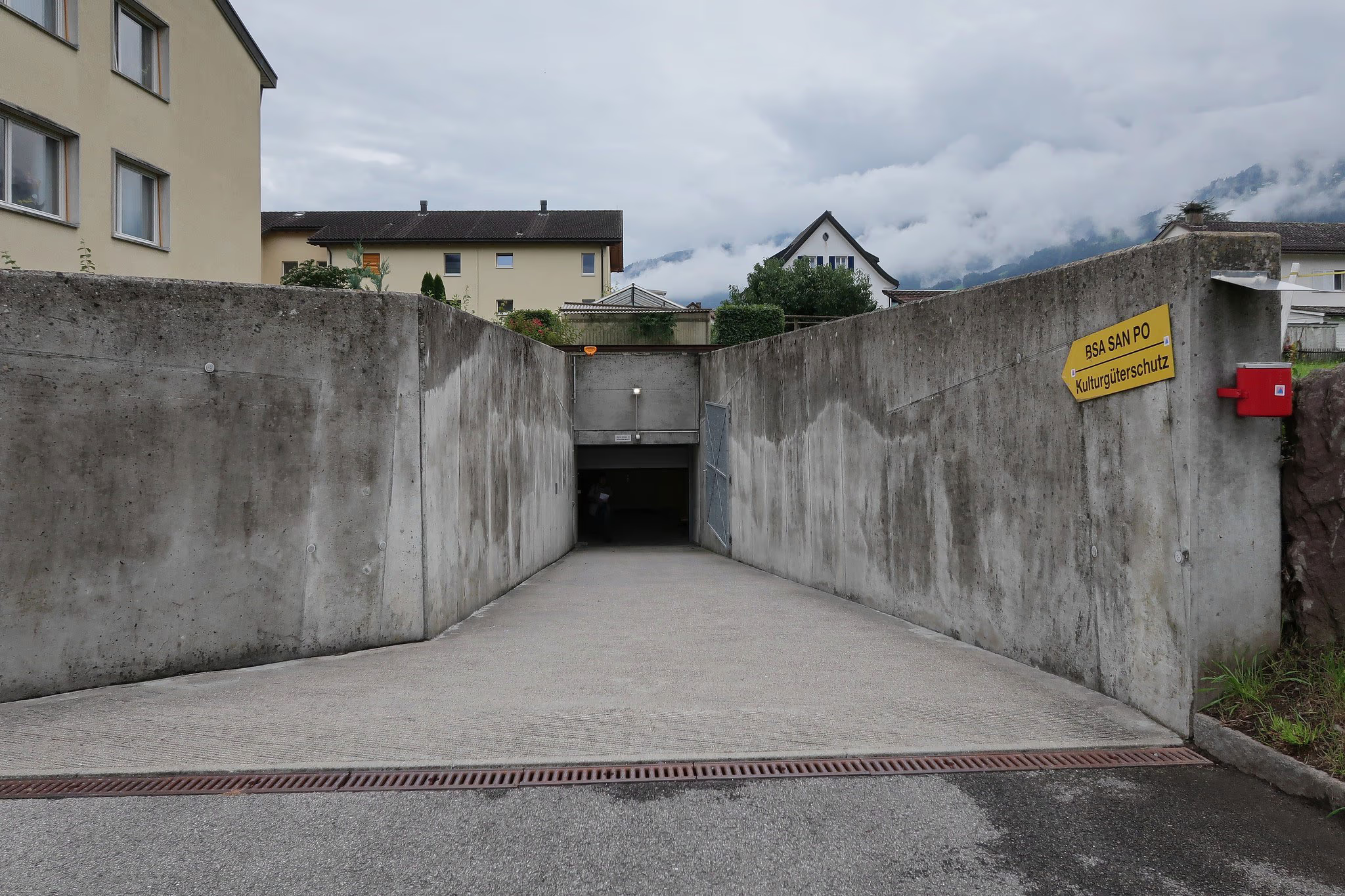
Entrance to one of the operational bunkers, covering an area of approximately 1,000 m², commissioned in 1995 in Mels. It includes a civilian sector, a command post, a medical unit, and a designated area for the protection of cultural property.
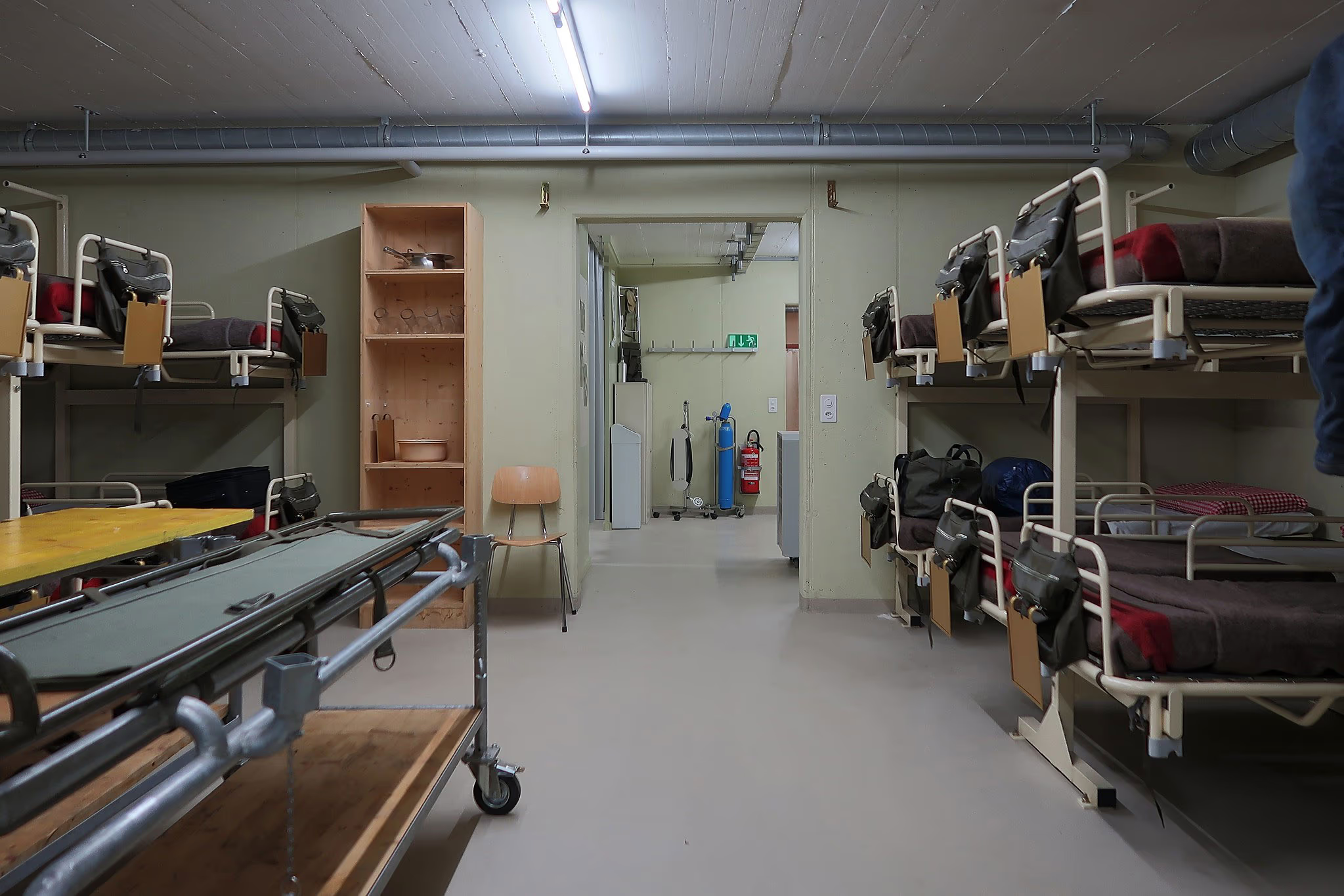
Medical unit inside the bunker in the town of Mels.
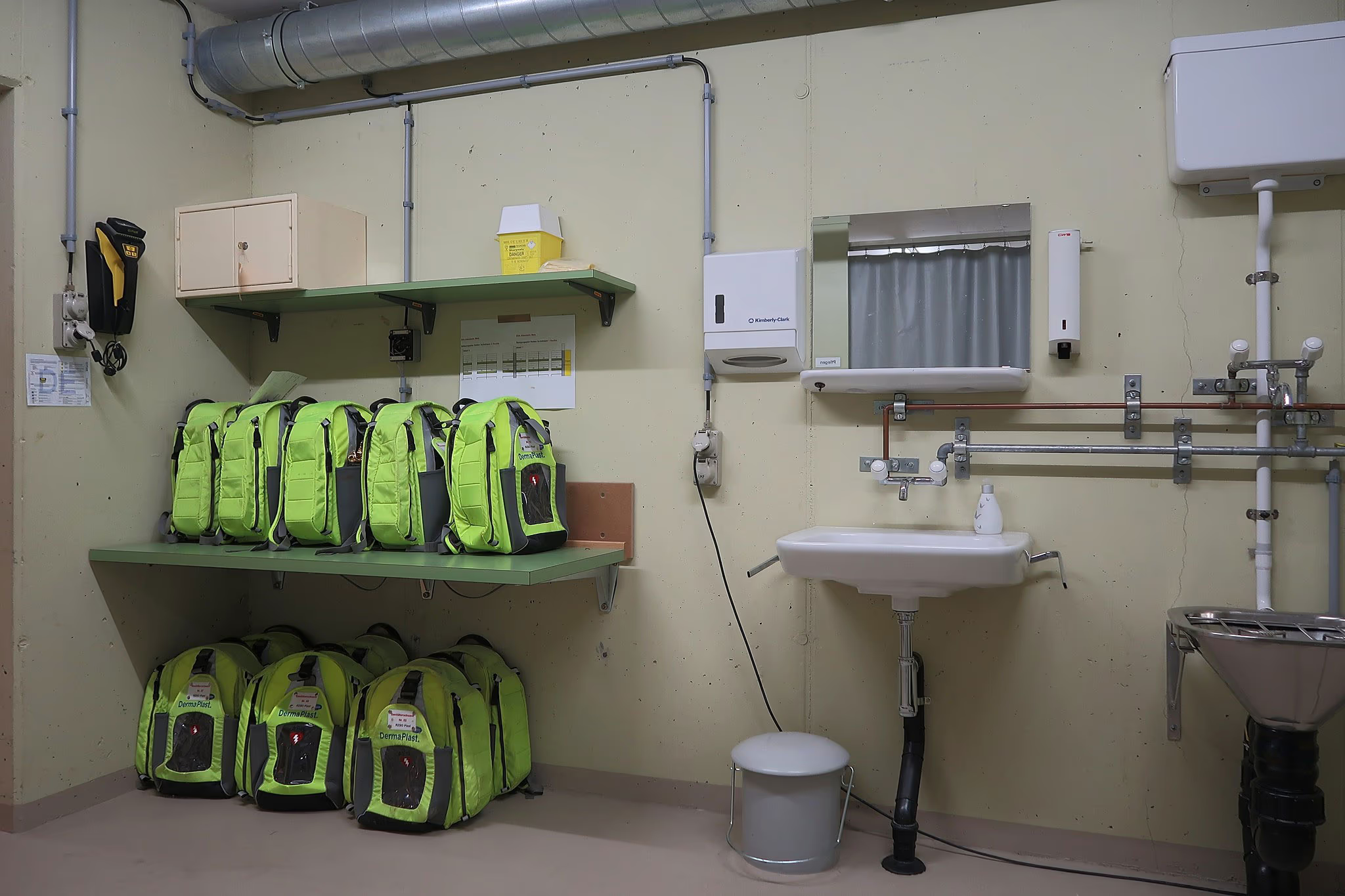
Treatment room within the medical unit.
Guillaume Vergenne, deputy head of civil protection for the canton of Geneva, describes bunkers as "an integral part of Swiss identity." Historian Silvia Berger notes that the tradition of viewing mountains and underground structures as safe havens has deep roots in the country’s military past. As early as the 19th century, Swiss generals began building fortified lines in the Alps, anticipating a retreat there in the event of an invasion. These defensive positions were modernized during the Second World War, but it was the devastation of European cities by aerial bombardment that convinced Switzerland of the need to protect its civilian population as well. The Cold War only reinforced that logic.
This is how the country came to adopt a law mandating the construction of civilian shelters. The largest of them—Sonnenberg in Lucerne—is a road tunnel designed to be rapidly converted into a bunker. Built in the 1970s, it was intended to shelter 20,000 people. Its entrances were fitted with concrete barriers one and a half metres thick, designed to seal off the tunnel in the event of a nuclear strike or a disaster involving critical infrastructure. Inside, it housed a command centre with bunk beds, reserves of water and canned food, dry toilets, a medical unit, and even a single communal shower for the entire facility.
It was assumed that Sonnenberg could be converted within two weeks—but a 1987 drill revealed just how difficult that would be in practice. Emergency services were unable to fully activate the life-support systems, and one of the four concrete doors remained open—casting doubt on the project as a whole. Since then, Switzerland has debated the rationale for maintaining such large-scale structures. Sonnenberg’s capacity was reduced to 2,000 people, and its former command centre was turned into a museum.
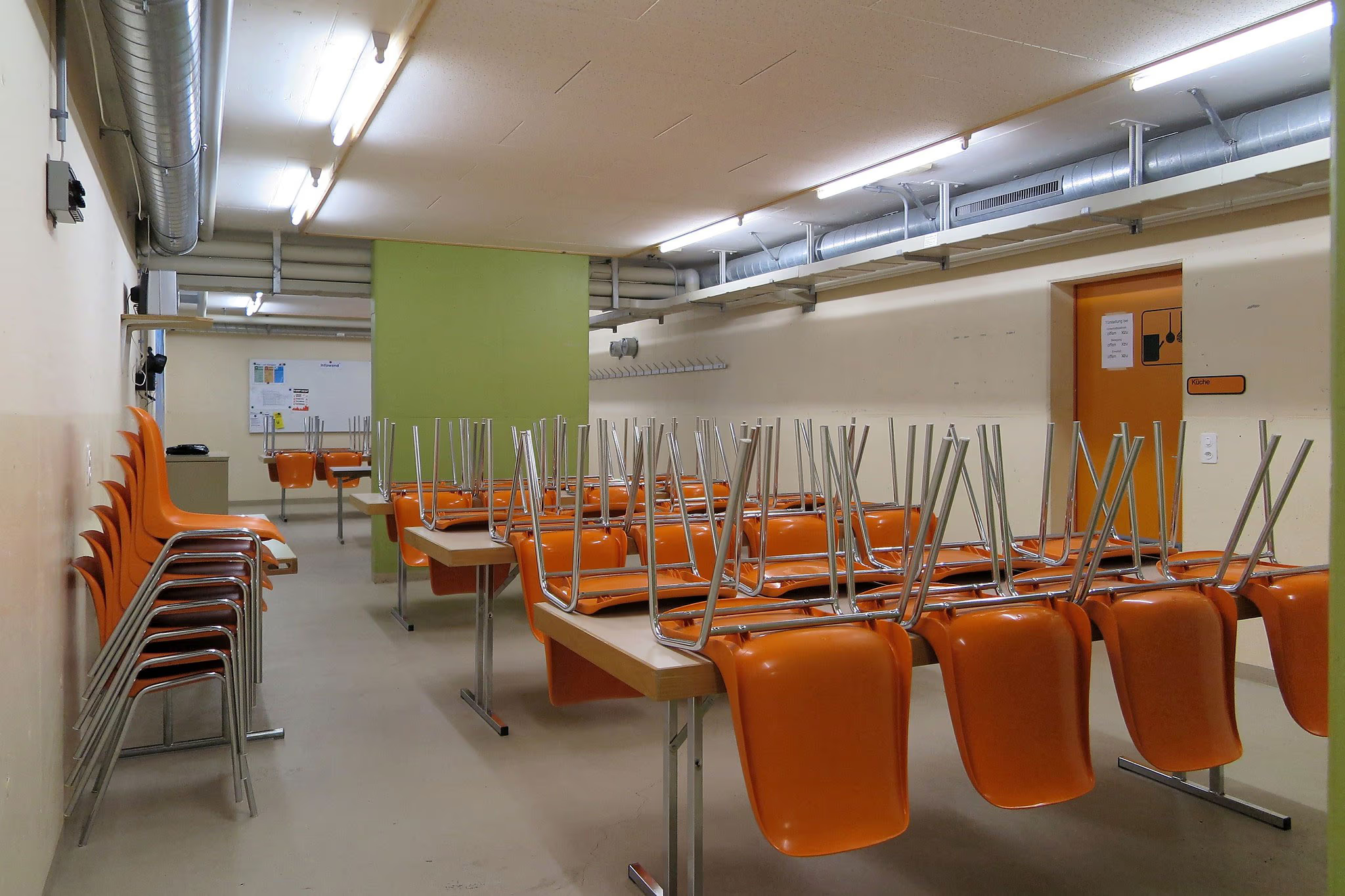
Lounge and dining area inside the bunker in the town of Berneck.
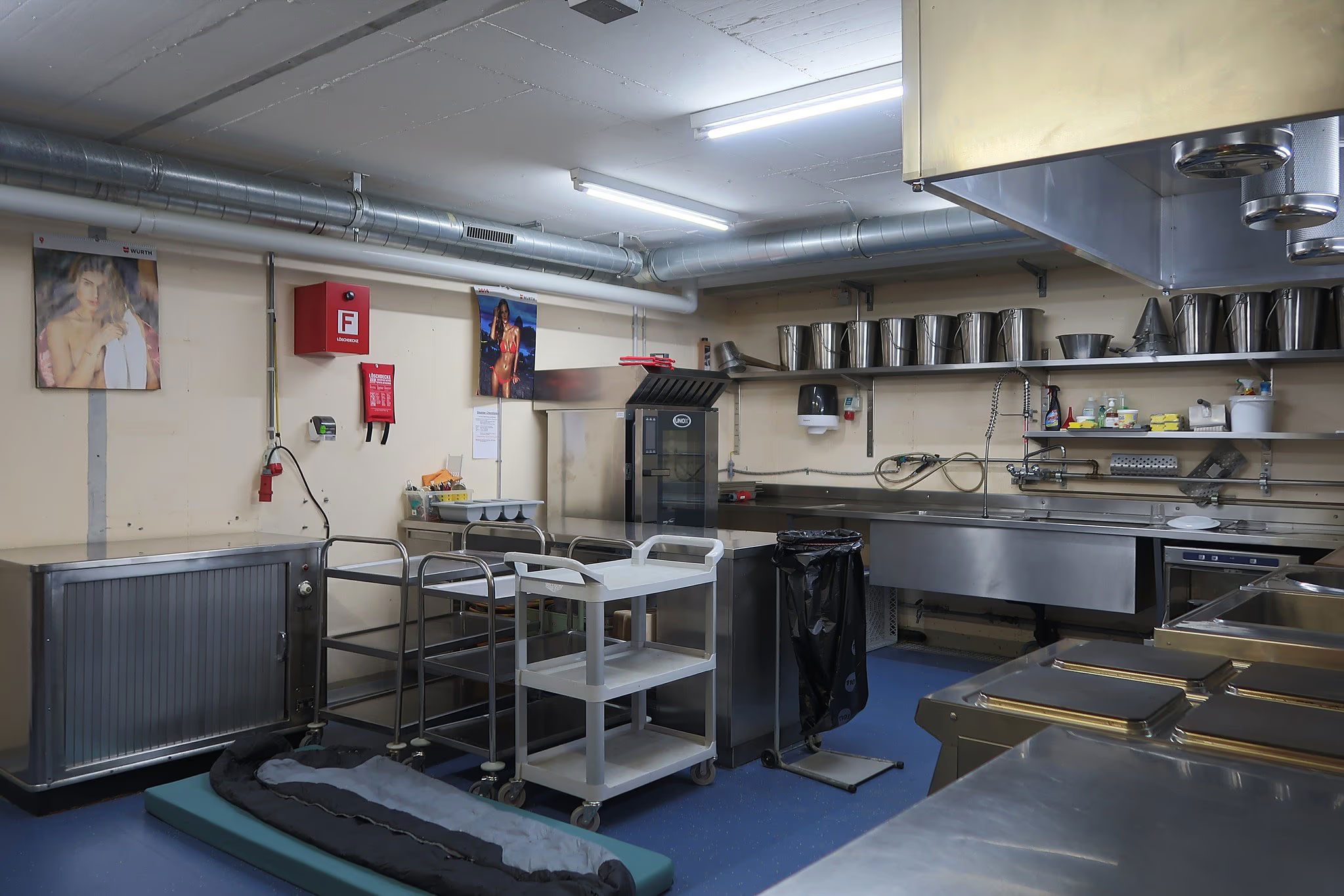
Kitchen inside the bunker in the town of Mels.

Hasler H74/84 switchboard installed in the Berneck bunker.
In the 1960s, the requirement to include shelters in new buildings was seen as a rational precaution. But by the 1970s and 1980s, pacifist sentiment was growing. Swiss society began asking difficult questions: Can a nuclear strike truly be survived? Does survival make sense if everything else is obliterated? Doesn’t the very existence of bunkers erode the belief that nuclear war is unsurvivable? And do such preparations divert attention from genuine efforts to prevent catastrophe?
The debate over the necessity of civilian shelters in Switzerland has never fully subsided—it has ebbed and flared in response to perceived threats. In 2011, parliament considered scrapping the requirement to build shelters, but the idea was abandoned after the Fukushima nuclear disaster in Japan. Similarly, Russia’s full-scale invasion of Ukraine in 2022 reignited interest in protective bunkers. Swiss citizens began calling and writing to the Sonnenberg museum, mistakenly believing they were contacting the civil protection service. Zora Schelbert, the museum’s director, who took those calls and emails, soon realized that many people were confusing the institution with an official authority.
Other regions noticed a surge in attention as well. Louis-Henri Delarageaz, head of civil protection for the canton of Vaud, which borders France, told Reuters that following the outbreak of war in Ukraine, they were even contacted by citizens of the neighbouring country. "Suddenly, we became highly sought after. People wanted to know where the bunkers were, whether they were operational, and if there were any available spaces," Delarageaz recalled. He added that, unfortunately, requests from French nationals had to be turned down.
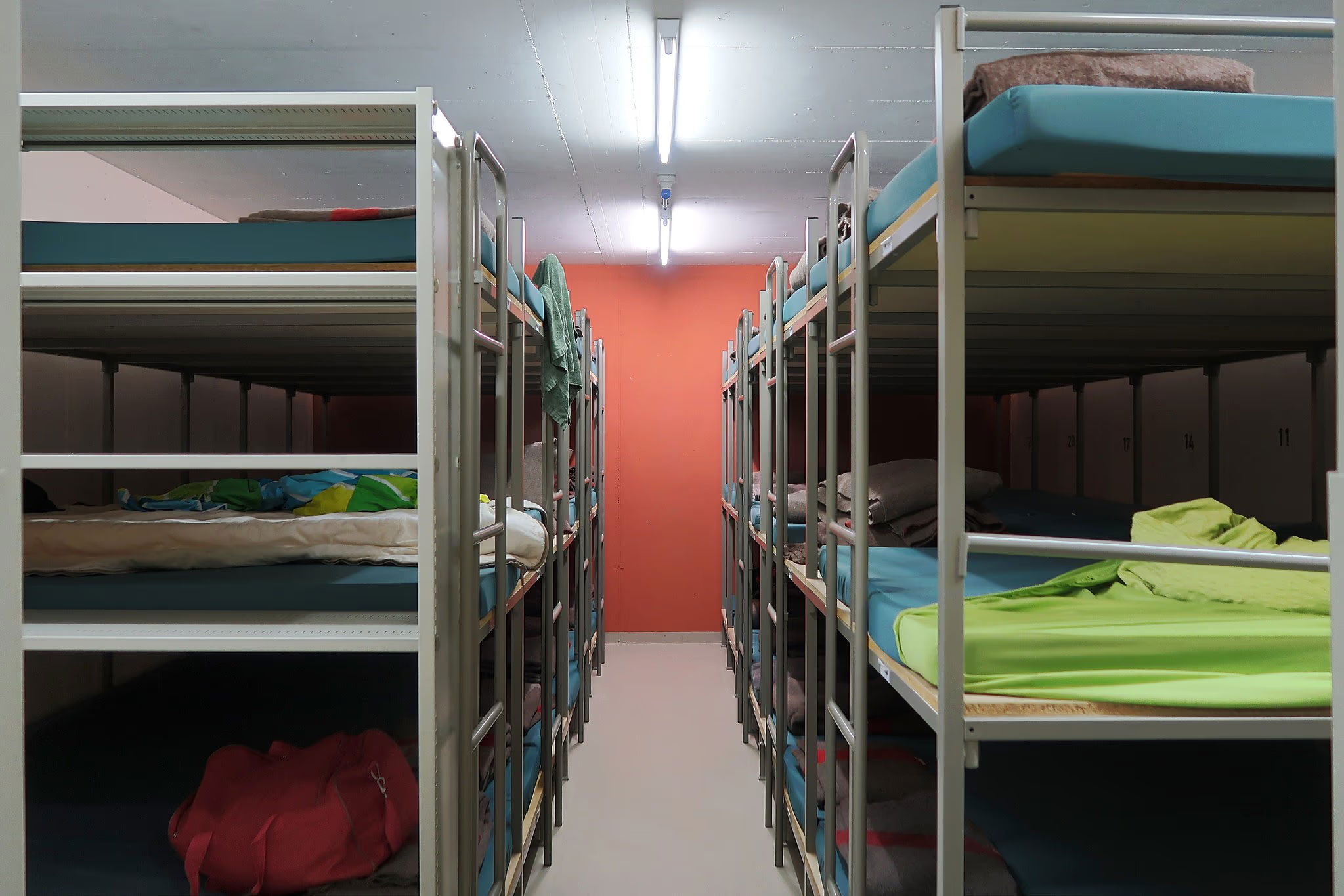
Communal sleeping quarters in the bunker in the town of Mels.
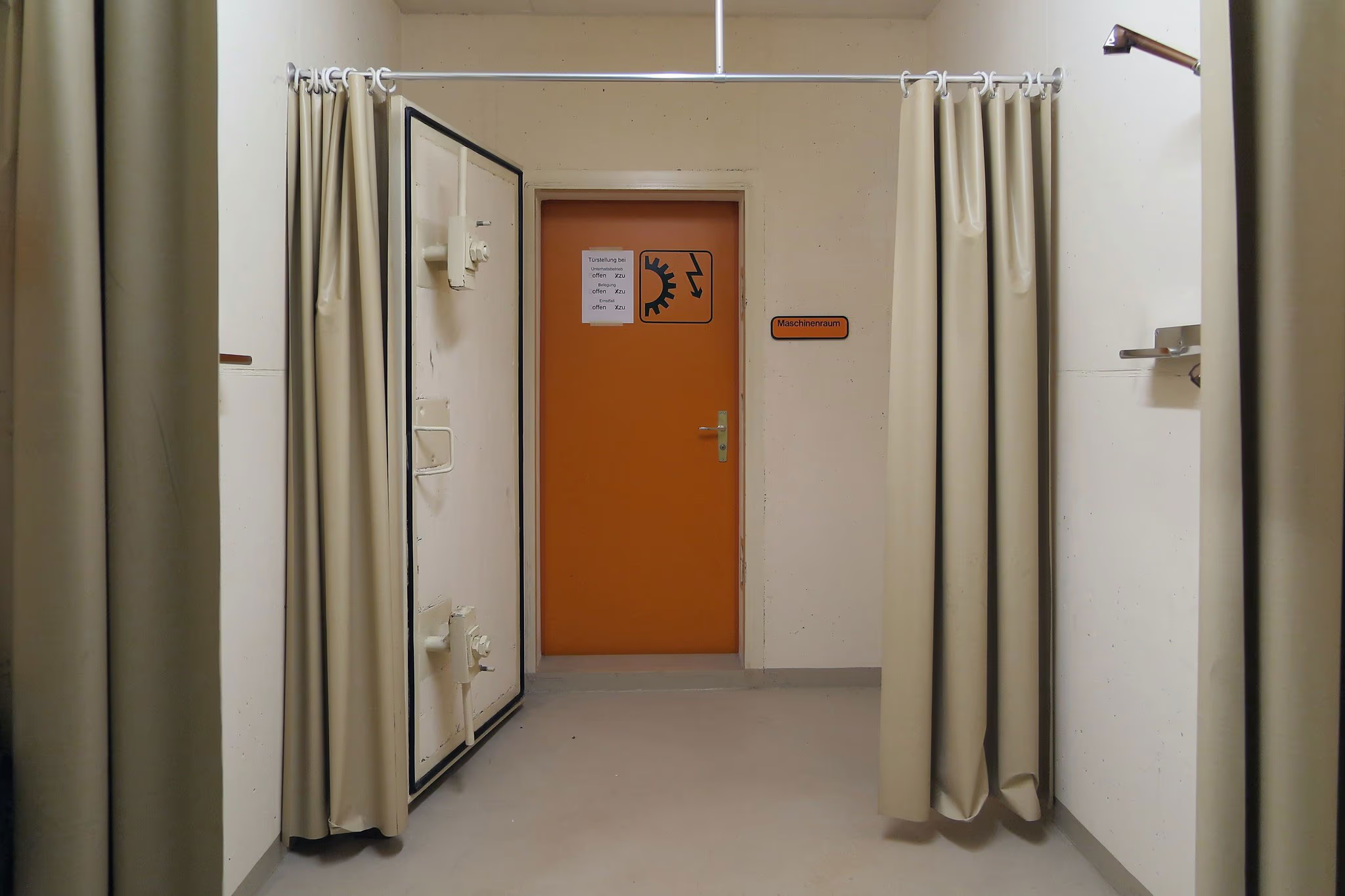
Passage from the sanitation area to the engine room.
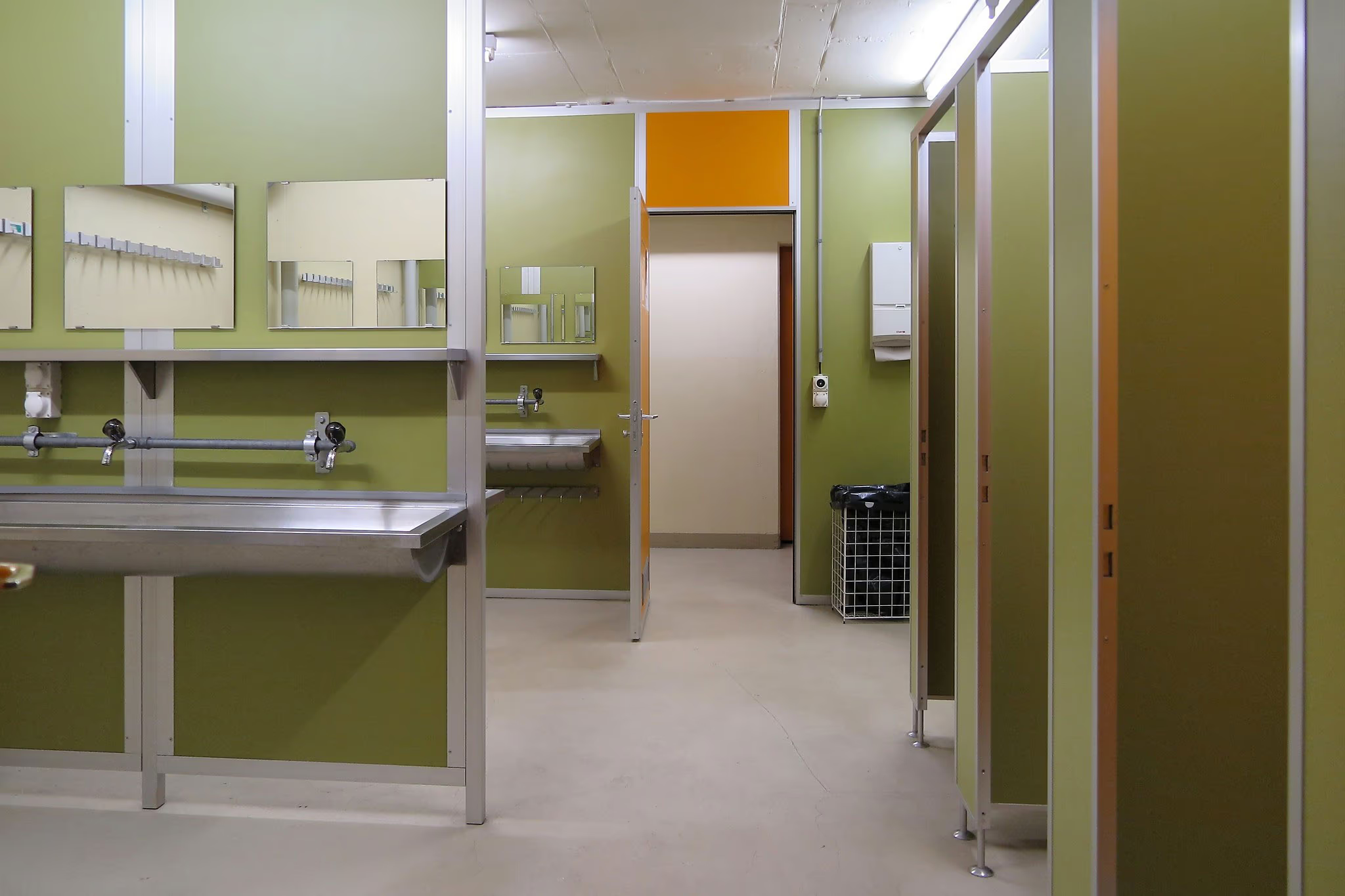
Washbasin area and toilets.
Over more than six decades, Switzerland has invested upwards of $13 billion in the construction of protective shelters. Now, against the backdrop of the war in Ukraine, perceptions of these structures are beginning to shift. Increasingly, they are seen not as bureaucratic relics, absurd formalities, or wine cellars in disguise, but as strategic assets. Zora Schelbert, director of the Sonnenberg museum, notes that since 2022, visitors have responded differently to the topic of bunkers. Daniel Jordi of the Federal Office for Civil Protection agrees: "Before 2022, most of the public—and even some politicians—considered shelters unnecessary. That has definitely changed."
This reassessment of defensive infrastructure is not confined to Switzerland. Across Europe, countries are increasingly treating bunkers as part of preparedness for potential escalation—especially amid declining U.S. security guarantees. Finland has announced it can shelter 85% of its population. In Sweden, bunkers remain available for 67% of residents. Norway is considering reinstating the requirement to build shelters alongside new housing—a policy it discontinued in 1998. Germany, which has fewer than a thousand public shelters, is weighing incentives for private construction. And in Spain, demand for personal bunkers has risen by 200% since 2022.